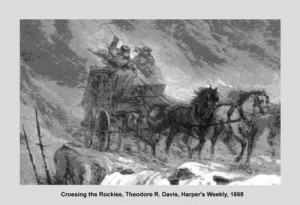Brief by Allen Best
Recreation – September 2008 – Colorado Central Magazine
You know what’s wrong with Yosemite and a lot of other national parks? They don’t have enough five-star hotel rooms.
So says The Economist magazine from its perch overseeing world affairs in London. The magazine notes that visitation to Yosemite during the last 13 years has dropped 9 percent. This is despite population growth of 17 percent in California, much of it inland, closer to the Sierra Nevada, where Yosemite and other parks are located.
Such proximity is a theme across the West, where population growth is occurring most rapidly near national parks and forests.
“Americans plainly think it is a good idea to live near national parks, but they are not keen on visiting them,” says the Economist.
What’s going on? The magazine examines a variety of factors. Big-game hunting has slackened. Cities, which people were fleeing in the 1990s, have become safer. And shopping malls are now outdoor oriented instead of domed.
“Yosemite is long on staggering views but short on what most people would today regard as entertainment,” says The Economist. It also notes that the hotels of Yosemite, although pretty, are basic. “If they were in Las Vegas, they would have been dynamited long ago.”
Top-end hotel rooms at parks get booked far more rapidly than cabins, notes The Economist, and cabins with indoor plumbing are reserved before more rustic accommodations. The magazine thinks the conclusion is obvious. And the fault, it says, lies with conservationists opposed to upscaling.
“This is a shame, and a self-defeating exercise,” concludes the magazine. “America’s environmental movement emerged in the 19th century to push for national parks. In the 20th century it sold them to the public through photographs and writing. It now seems bent on driving people away from them.”


